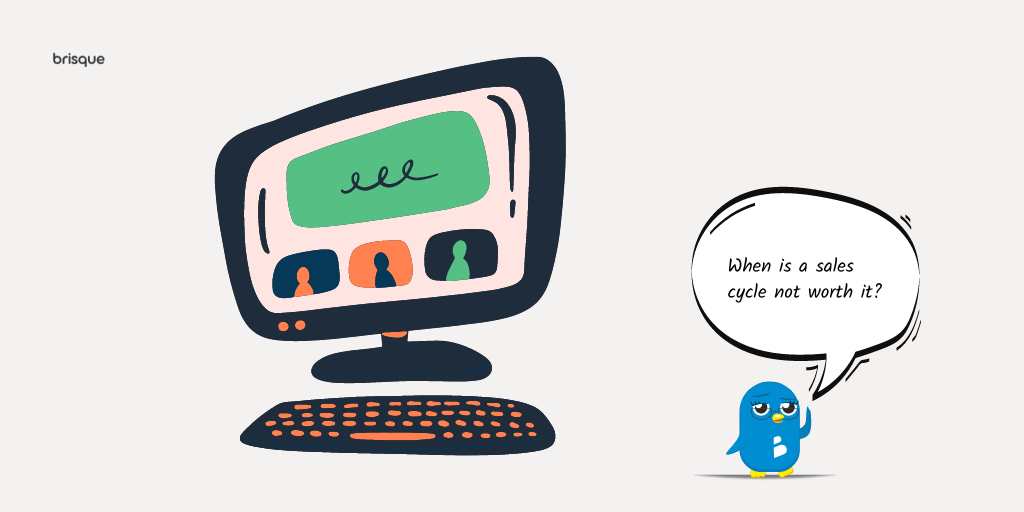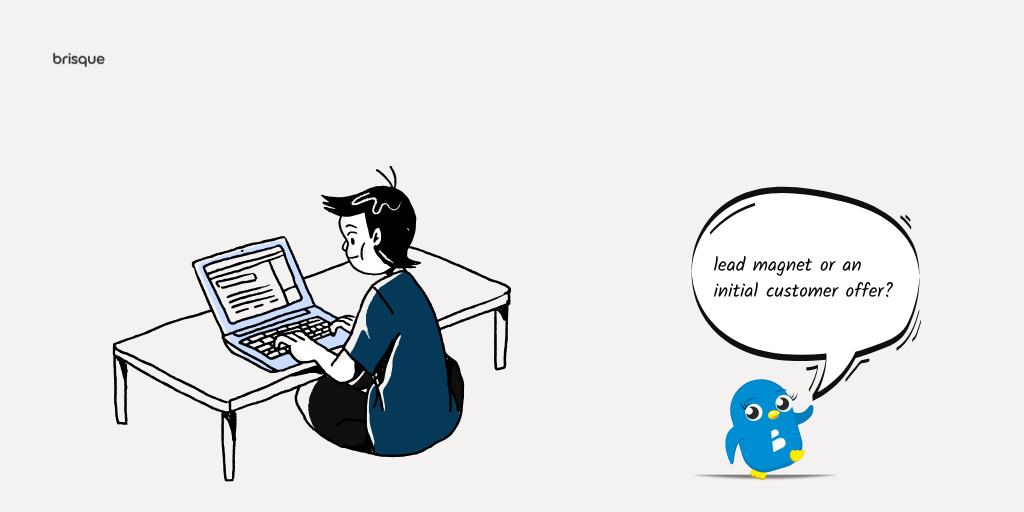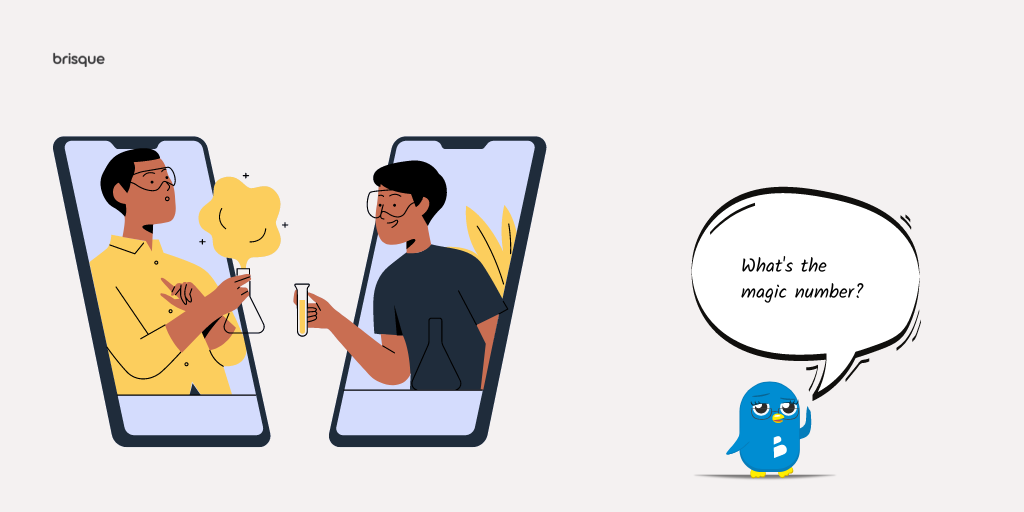Summary
Some industries tend to have longer sales cycles than others. Usually, Business-to-business products and services have a longer sales cycle than Business-to-Consumer products.
As a business, since you have a finite number of resources, it’s helpful to figure out ways to shorten a sales cycle or decide to call it quits when a sales cycle is too lengthy.
In this article, we’ll examine how to calculate the cost of continuing to run a long sales cycle.
The sales process is a balancing act.
You’ll win some and lose some.
However, each sale also comes with associated costs. A long sales cycle can result in a loss in profits.
Whenever a salesperson spends time on a long sales cycle, you lose some resources in the process.
What makes a sales cycle long?
Your sales cycle length will depend on several factors, including the complexity of the product, the cost, and the number of people who have to decide on the purchase.
For instance, a $100 product is likely to have a shorter sales cycle than a $10,000 product.
With a long sales cycle, it’s essential to develop strategies for shortening the sales cycle so you can get to a yes or no sooner to free up your resources.
Here’s the question!
When should you withdraw from a sales deal that’s gone on for too long?
This is a complicated question to answer.
Sometimes long sales processes happen because of life circumstances beyond anyone’s control, including when a key player leaves a company.
While figuring out when you need to turn your attention away from a particular sales deal is not an exact science, you can create a process for identifying indicators when the long sales process is not worth the effort.
Evaluating a Long Sales Cycle: Start with Your Lead Grades
At the basic level, start with your opportunity grades.
It’s easy to figure out if you should still spend a lot of effort on a grade (C) or (A) level opportunity. But that’s only the beginning.
Sometimes the grade only tells part of the story.
For instance, you could have an opportunity with a (B-), but you can tell from the personal connection that you’ve built with the project sponsor that they are working hard to get your deal to close and might be running into some issues along the way.
In that case, you can’t base your decision to pull out of an active sales cycle on just a grade. You’ll have to consider that personal connection as well.
But what about a case when the project sponsor is trying but not making headway, and the sales cycle seems to take up a lot of your time?
When should you call it quits?
At Brisque, we believe in creating a fact-based system for making decisions. As a result, here’s how to decide if you should keep running a long sales cycle.
Here’s how you can calculate when you are making a loss on a long sales cycle.
To do this, you’d need to have the following information (I’ve included samples):
|
Start by calculating the customer lifetime value of your potential sale
The customer lifetime value is a useful metric that helps you understand the lifetime monetary value of a customer to your business.
Here’s the formula for calculating your customer’s lifetime value.
Customer Lifetime Value = Average value of a sale X Number of Purchases X Retention Time Period X Profit Margin
When to use the average value of a sale or the deal value
When you are trying to find the customer lifetime value of a particular deal, you can either use the average value of a sale which is the traditional calculation of a customer lifetime value.
You can also choose to use the deal amount since our analysis is to find out if a particular deal is worth the effort. The distinction is between knowing when you should use the deal amount and when you should use your average sale amount for this analysis.
Use deal amount if your customers pay the same amount year-over-year
As a rule, if you have a business where customers pay the same amount year-over-year, then you can use the deal amount in your analysis. Subscription businesses are an excellent example of a type of business where the deal amount may remain the same every year.
Use average sale price if pricing is not the same year-over-year
On the other hand, if you have a business where the sale price decreases or fluctuates in any way, then you use the average price since it’s difficult to know the exact future amounts.
Technology companies with a high upfront implementation cost and a lower maintenance fee would fall into this category. Same as any consumer-based product with different product prices.
In this example, we’ll assume that the business is a subscription-based business where customers sign a yearly contract and pay the same amount year-over-year.
As a result, we can use the deal amount in the calculation to figure out our customer lifetime value for the deal.
| Modified Formula
Customer Lifetime value = Deal amount X Number of Purchases X Retention Time Period X Profit Margin =($100,000 X 1 X 5 )X 40% = $200,000 |
Based on this calculation, if you win the deal and the customer stays with the company over the average period of 5 years, you would make $200,000 from the customer.
Now, let’s take a look at how much of our resources we’ve spent so far on the deal.
|
By looking at the customer lifetime value vs. the expenses incurred so far, one can argue that the sales representative should keep working on the deal.
But not so fast!
While this calculation helps you gauge your expenses, you may end up ignoring your opportunity cost of not working on other deals during that time.
How to calculate your opportunity cost on a long sales cycle
To calculate the opportunity cost of potential sales, here’s what you’d have to look at:
- Average sales cycle length: 2 months
- Average deal size: 50,000
In this case, an average sales cycle lasts for about two months and typically is a 50,000 deal.
Since the sales deal has been running for six months, you could have technically worked three smaller deals within that time (6months / 2months = 3 deals).
So back to our customer lifetime value calculation, let’s calculate the customer lifetime value for three deals at 50,000 each.
Again, we will use the modified customer lifetime value calculation, which uses the deal amount.
| Customer Lifetime value = Deal amount X Number of Purchases X Retention Time Period X Profit Margin
= ($50,000 X 1 X 5) X 40% = 100,000 (1 smaller deal) Customer lifetime value for 3 smaller deals = $100,000 *3 = $300,000 |
Therefore, to calculate the opportunity cost of the long sales cycle:
You use the standard opportunity cost calculation:
Forgone outcome – chosen outcome
That equates to the following:
The opportunity cost for lost sales due to the long sales cycle300,000 (customer lifetime value for potentially lost sales) – 200,000 (customer lifetime value for long sales cycle) = $100,000 |
In essence, the opportunity cost of the long sales cycle is $100,000, and we also have expenses of $4,749.76.
| Total cost of continuing the deal = 100,000 + 4,749.76 = $104,749.76 |
You can conclude that it’s time to close out the long sales deal because you are now running at a loss.
Final Thoughts
You should have a ‘make or break’ sales cycle length process where a salesperson must decide to pull out of a sales deal or continue the process. The ‘make or break point’ is often dependent on your average sales cycle duration.
Even when you decide it’s time to stop actively pursuing a sales deal, you can continue to have automated nurturing running in the background, should the prospective client ever decide to reengage.
Key Takeaways:
- An easy starting point for evaluating if your deal effort is worth it or not is to look at your lead opportunity grade.
- First, find the cost of continuing to run a sales cycle by calculating your sales expenses.
- Then, calculate the opportunity cost of potential lost sales for the duration of the sales cycle.
- Your final deal cost is your opportunity cost + your sales expenses.
- You don’t have to “kill” deals completely. You can decide not to actively pursue the deal but continue to have an automated follow-up.
Read Also:




